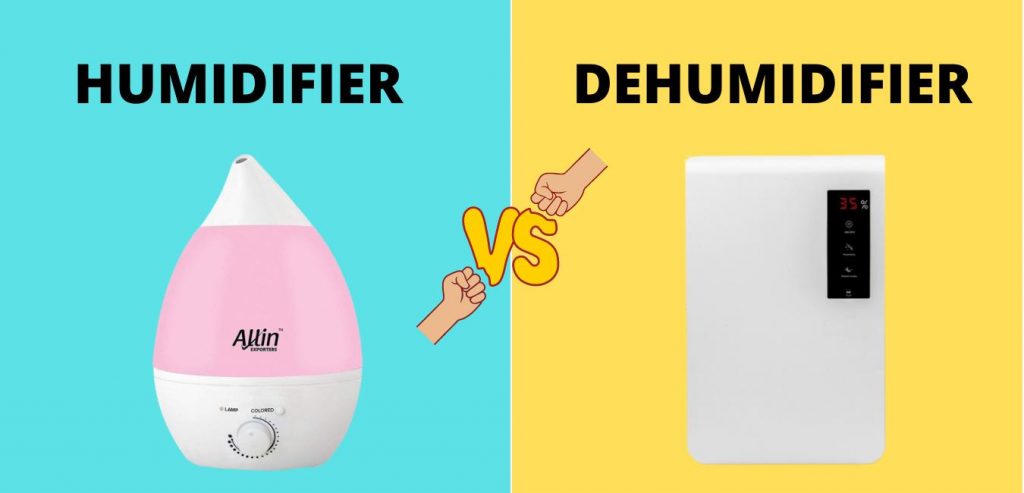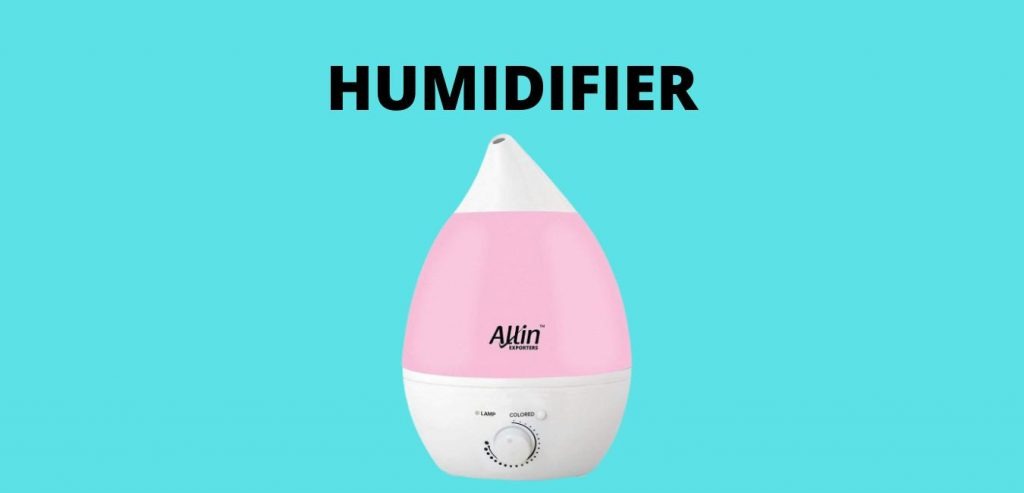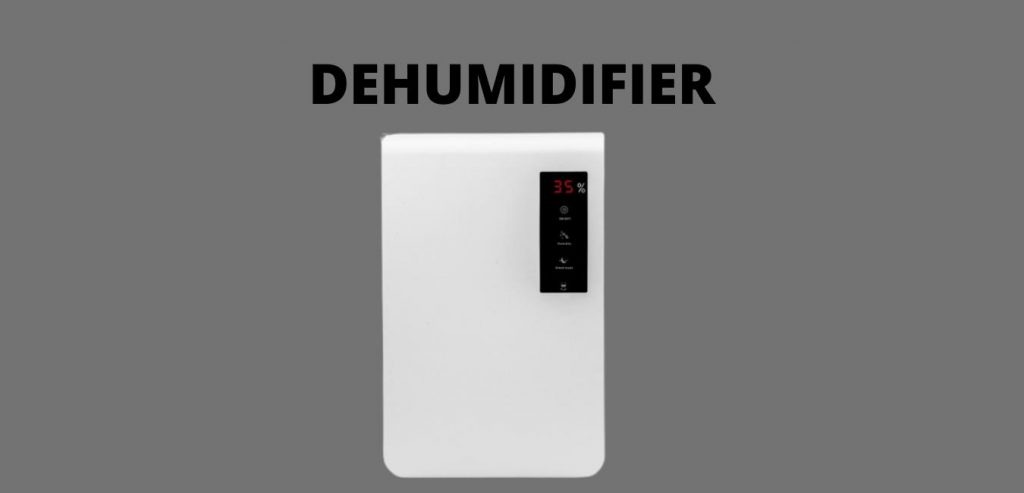Humidifier Vs Dehumidifier, have you ever given it a thought? When living in a space, we hardly give humidity content in the air much thought. Nevertheless, this is one of the prime ‘factors’ about the air around us that contributes to our comfort levels. Have you noticed cracks on your heels appear mysteriously? This is due to the lack of humidity in the air. Have you been facing a tough time air-drying after a shower? Well, this is due to too much moisture in the air around you. So, what do we do? We simply get the right device for the appropriate environmental conditions around us.

While we take into account factors such as heat, cold, dust, light, and more, we hardly take notice of the moisture content in the air. Consequently, we end up ‘putting up’ with certain issues within our physicality and also the space around us without deciding on the cause. Development of moulds on the walls, spoiling of the leather at home, strange stickiness on the skin, or sudden cracks on your feet. These are various symptoms around us, either due to too much moisture or the lack of it. The problem of temporary ‘Dandruff’ can also be attributed to the lack of moisture in the air around you.
Nevertheless, the good news is that we have solutions for both high moisture or lack of it. But before that, what is humidity, and what do we do about it? Let us find out.
Relative Humidity
This is the measurement of humidity in the air around us, which is nothing but the present water vapour. This once again greatly depends upon the weather conditions of heat or cold at a certain place. Usually, the RH level of 30-50% is considered to be appropriate; anything above this can lead to bacterial growth. However, in case the natural environment around us is not able to control the right amount of moisture, we need some extra assistance. For this, devices like Humidifiers and Dehumidifiers come into our aid.
What is a Humidifier?

The humidifier works by adding extra moisture into the air. The humidifier is available in two types: the Cool Mist humidifier and the Warm-mist humidifier.
Cool Mist Humidifier
Simply speaking, this Humidifier type introduces ‘cool mist’ into the air around us. This is done by breaking up the water molecules into tiny particles and ‘spraying’ a fine mist-like water vapour about. As the water is cold, it helps cool the surrounding air.
Warm-Mist Humidifier
As the name suggests, the device works by introducing warm vapour into the air in the space around. As the mist emerges from a heating element, the temperature of the air also increases. This is how it works:
- A power source is used to plug in the device.
The electricity is used to heat the container, leading to the boiling of the water contained in it. - Thus, steam is produced that is released from the outlet located on the device and warms the surroundings subsequently.
- A power source is used to plug in the device.
Advantages of Humidifier
- They help add moisture in the air around.
- Help combat dryness in a sustainable manner.
- Are best suited when dealing with ailments like Allergy and Asthma.
- Reduces snoring.
- Maintains the moisture content of the skin and hair.
- Causes the cough to be more productive.
Disadvantages of Humidifier
- Dirty Humidifiers can cause major health risks in the long run.
- Sometimes, the Humidifiers can lead to too much moisture in the air that can cause breathing difficulties.
- The use of humidifiers can lead to increased growth of dust mites and moulds.
- Warm- mist Humidifiers run a risk of causing burns and accidents.
- Warm-mist Humidifiers are not suitable for kids.
What is Dehumidifier?

As the term suggests, the dehumidifier is designed to remove excess moisture from the air around us. This device is best suited for Humid Climates where the Relative Humidity is very high. Also, these come in handy if your home is suffering a leak or mild flooding lately. Due to excess humidity in the air, the growth and development of moulds and mites are encouraged. This can lead to allergic reactions and severe asthmatic symptoms. The main aim of the dehumidifier is to reduce the indoor RH to a comfortable 30-50%. This is how they work:
- The warm air is sucked into the device with the help of fans and into the metal coils. These are then cooled down with the help of refrigerants that work by reducing the temperature of the coils.
- The Warm air is made to shrink once inside due to ‘thermal expansion.’ This results in tiny water droplets falling out of the air as it shrinks.
- The warm air releases the water droplets as condensation takes place and is stored in a ‘container’ located in the device.
- Thus, the air temperature is also reduced, and it has been devoid-off its excess moisture. This cool air is later released back into space.
Advantages of Dehumidifier
- Is beneficial when treating sore throat, nose bleeds, Sinus, Cold and Flu.
- Do not require refills.
- Are low on maintenance.
- Are the best solution when the RH is 60% indoors for a prolonged time.
Disadvantages of Dehumidifier
- They do not treat the root of the problem.
- They do not control the deterioration of moisture-sensitive materials like furniture.
- Contribute to an increase in electricity bills.
- Are noisy, about 20 -50 DB.
Difference Between Humidifier and a Dehumidifier
What is the difference between a humidifier and a dehumidifier? Let us take a look:
HUMIDIFIER | DEHUMIDIFIER |
Its purpose is to increase the moisture content indoors | Its purpose is to reduce the excessive moisture from the room |
Best suited for Winters or cold regions | Best suited for Warm or Humid climates |
Eliminates molds, dust, mites, mildew from the air | Helps moisten the nasal passage that dries up during the colds. Is best suited for the children's room |
Recommended when the Humidity is more than 50% | Recommended when the Humidity is less than 35% |
Available in Air conditioners, Ionic membranes | Available as Warm mist and cold mist types |
Mechanical/Refrigerative | |
Requires maintenance | Requires less maintenance in comparison |
Cool Mist Vs Warm Mist Humidifier: FAQs
Winters are dry, so a humidifier is recommended.
No, both function in opposite principles. However, both help eases out respiratory issues in users with Asthma and Chest congestion.
You know you need a humidifier when:
- You suffer from cold for no apparent reason most of the year.
- Your skin and scalp feel unnaturally dry at most times.
- The Hygrometer reading suggests.
- You have respiratory issues.
- The wood floors and furniture keep drying out.
Yes, one can allow the humidifier to run all night, however, with the proper precautions on hand. For this, it is a good idea to get yourself a Humidifier with a built-in Humidistat, which functions to sense the humidity levels and, thus, control the device.
Yes, you can use Tap water. However, it is recommended that you utilize clean, distilled, demineralized water for the better maintenance of the humidifier.
No, too much moisture throughout the night is never a good idea.
The normal humidity levels in a room at any time should be between 30%-50%. Any value less than 30% requires the use of a Humidifier.
Yes, excessive moisture can lead to the development of moulds in a room.
Humidifier Vs Dehumidifier: The Conclusion
So what is it going to be between Humidifier Vs Dehumidifier? This very much depends upon where you live and what your health condition suggests.
It’s Hot And Humid: In this case, there are chances that your room is laden with heavy moisture. For this, an excellent Dehumidifier from a good brand is recommended. This will help the RH levels of your room ‘balance out.’
It’s Cold And Dry: In this case, get yourself an excellent little Humidifier; because the chances are that you and everything else around you are drying out more than required. A Humidifier will help restore the expected levels of moisture in the air around you, thus, helping you with too-dry nasal passages that makes it tough to sleep at night.